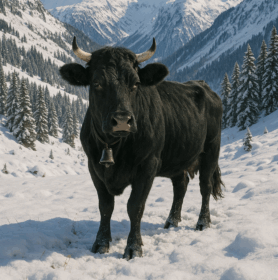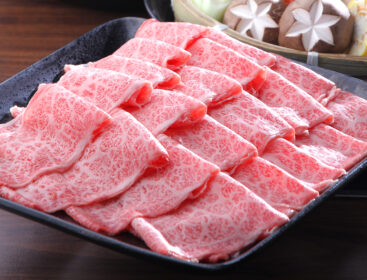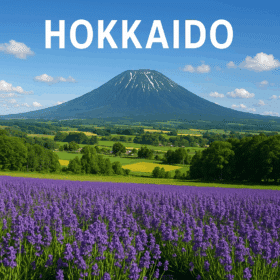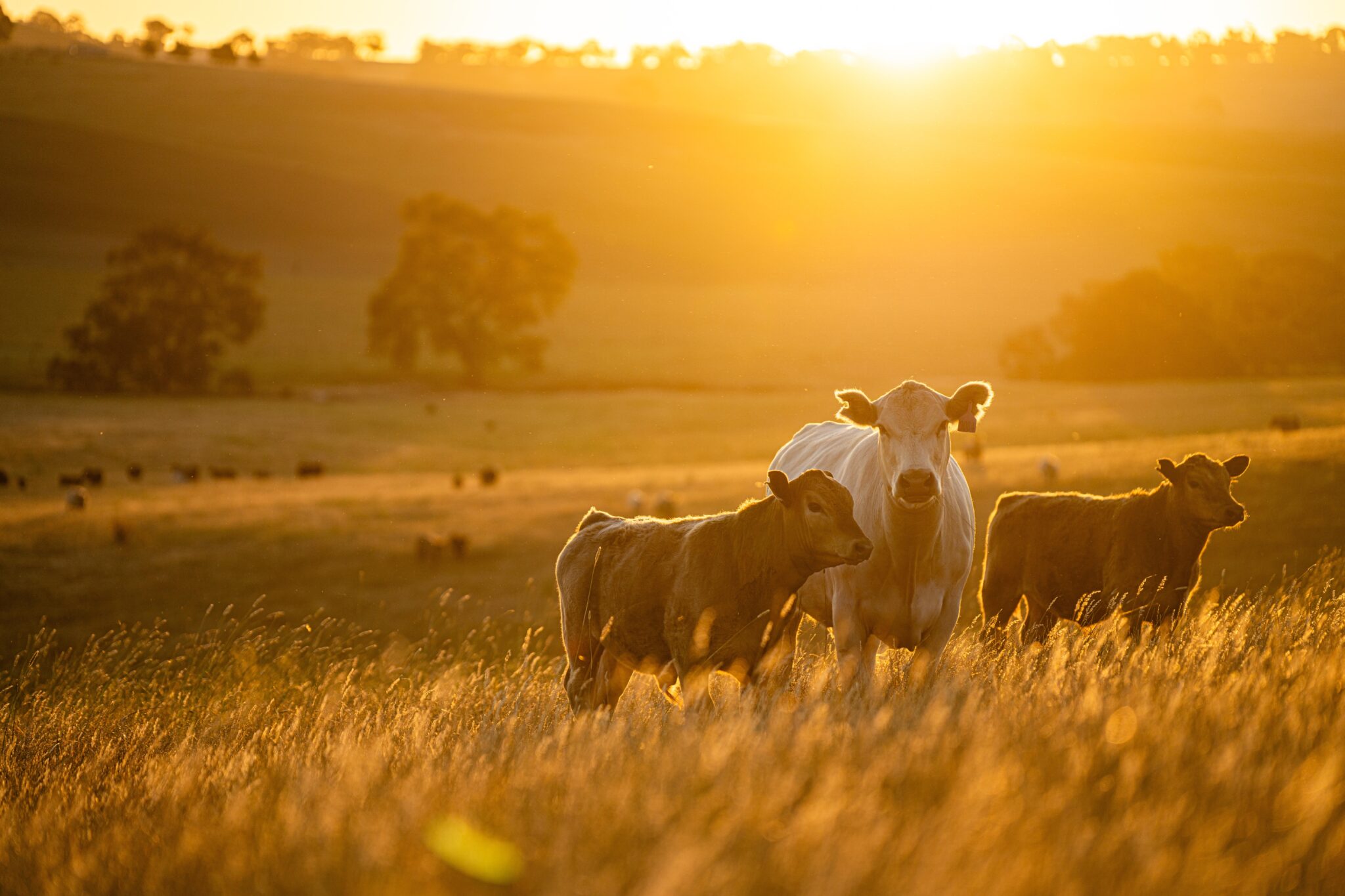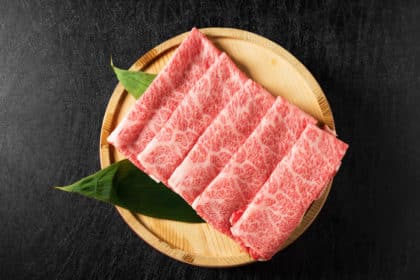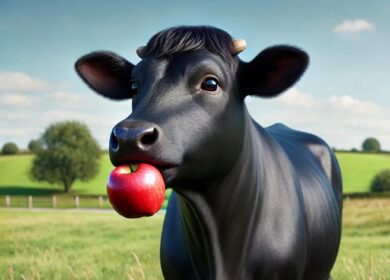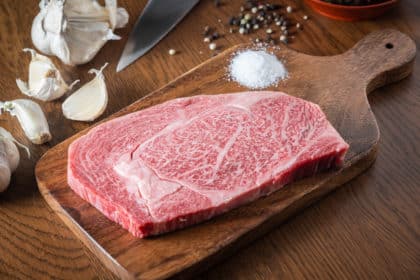Category: General
Hidaka Wagyu: Nature-Raised Beef with a Deep, Northern Flavor
Hidaka Wagyu is a rare and naturally-raised Japanese beef brand from Biratori-cho, nestled in the Hidaka Mountains of Hokkaido. Raised in a pristine, mountainous environment with cold winters and open pastureland, this Black-Haired Japanese Cattle breed develops a rich, condensed flavor profile unlike any other. With free-roaming cattle, clean water, and seasonal climate advantages, Hidaka […]
Iwate Kitakami Gyu: Light, Delicate Wagyu from Northern Japan
Iwate Kitakami Gyu is a brand of Black-Haired Japanese Cattle (Kuroge Wagyu) raised in Kitakami-shi, a beautiful city in Iwate Prefecture, located in northern Japan. Known for its light color, tender texture, and sweet, delicate fat, this Wagyu brand offers a desireable experience for all Wagyu enjoyers. With a minimum marbling grade of A4 and […]
Furano Daichi Wagyu: Wagyu from the Heart of Hokkaido
Furano Daichi Wagyu is a rare Wagyu brand raised in Furano-shi, Hokkaido, Japan’s northernmost island known for its clean air, lush farmland, and cool climate. Produced exclusively from Black-Haired Japanese Cattle (Kuroge Wagyu), this brand stands out for its floral-scented fat, buttery texture, and creaminess. With an annual production of approximately 70 cattle, Furano Daichi […]
Beni no Gyu: A Rare, Umami-Rich Wagyu from Tochigi Prefecture
Beni no Gyu is a distinctive brand of Wagyu beef raised exclusively in Tochigi Prefecture, Japan. Sourced from Brown-Haired Japanese Cattle—a less common breed than the widely known black-haired Wagyu—this brand of Wagyu is celebrated for its marbling, rich umami, and sweet flavor. With an annual production of only around 100, Beni no Gyu is […]
Cherry Blossom (Sakura) Wagyu: A Sustainable Luxury
Cherry Blossom Wagyu, also known as Sakura Wagyu, is a Japanese Wagyu brand raised in the serene setting of Tochigi Prefecture. This exceptional Wagyu is as beautiful in flavor as the name suggests—drawing inspiration from Japan’s iconic Sakura for its elegance and harmony with nature. Sakura Wagyu is the highest rated Wagyu brand on our […]
Matsusaka Gyu: Japan’s “Art of Meat” from Mie Prefecture
Matsusaka Gyu, prized as “the art of meat,” is a celebrated Japanese Wagyu brand that originates from Matsusaka-shi and surrounding towns in Mie Prefecture. Exclusive to carefully raised heifers (female cattle that have not had children), Matsusaka Gyu stands out for its remarkable marbling, traceability, and rich culinary history. Wondering what other brands of wagyu […]
Apple-Fed Wagyu: A Must-Try Delicacy from Nagano Prefecture
Apple-Fed Shinshu Gyu is a distinguished brand of Japanese Wagyu, hailing from the Nagano Prefecture. Renowned for its unique apple-enriched diet, this beef offers a tender texture, refreshing flavor profile, and distinctive taste, setting it apart in the world of premium meats. Wondering what other brands of wagyu there are? Click here! The Essence of […]
A Look Back at Iwate Wagyu Restaurant Week 2025
Philadelphia just wrapped up its first-ever Iwate Wagyu Restaurant Week, and what an incredible journey it was! From January 23 to February 7, 2025, food lovers indulged in the luxurious flavors of authentic Japanese A5 Wagyu, expertly crafted by some of the city’s top chefs. The event was a massive success, bringing together food enthusiasts […]
Wagyu’s Low Melting Temperature: The Secret Behind Its Buttery Texture
Japanese Wagyu is celebrated for its unparalleled tenderness, rich umami flavor, and melt-in-your-mouth texture. One of the most remarkable characteristics that sets Wagyu apart from other types of beef is its low melting temperature. Unlike conventional beef, Japanese Wagyu fat begins to liquefy at body temperature, creating an incredibly smooth and velvety eating experience. Understanding […]
Utilizing Wagyu Fat: A Culinary Secret for Flavorful Cooking and Baking
Wagyu beef is renowned for its intense marbling, tender texture, and rich flavor. However, beyond the steak itself, one of the most valuable aspects of Wagyu is its fat—a highly versatile ingredient that can elevate both savory and sweet dishes. With a low melting point and a high proportion of monounsaturated fats, Wagyu fat is […]

